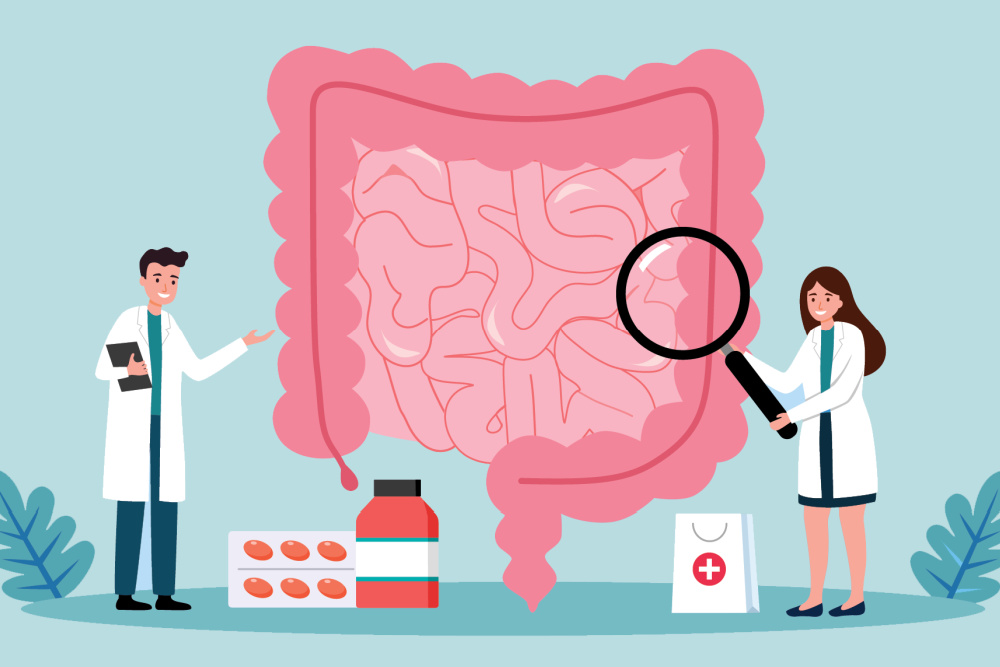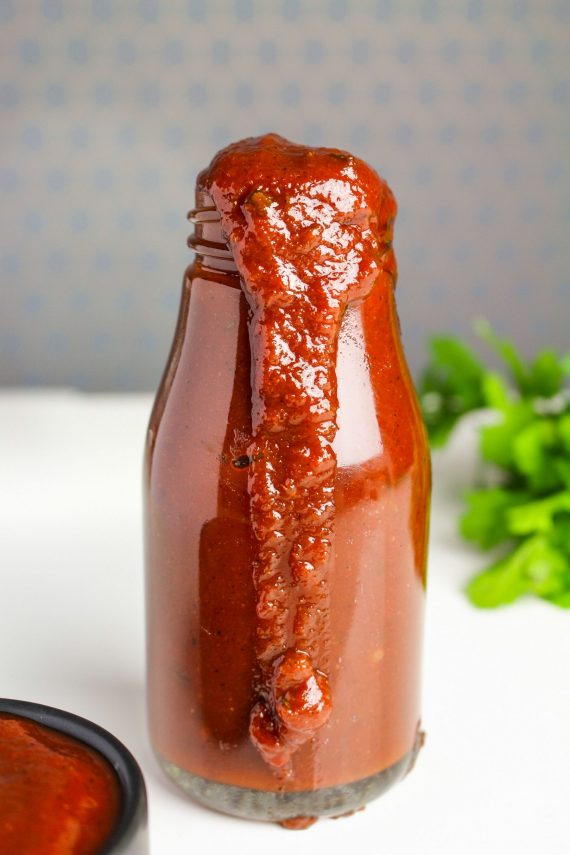If you’re living with Irritable Bowel Syndrome (IBS), you already know how unpredictable and disruptive it can be. If your symptoms seem to swing between constipation and diarrhoea, you might be dealing with a specific subtype called IBS-M, or IBS with mixed bowel habits. Let’s break it down—and more importantly, talk about how you can manage it.
This article will cover:
Let’s get started.
What Is IBS-M?
IBS-M is one of the four main subtypes of Irritable Bowel Syndrome:
- IBS-C: Constipation-predominant
- IBS-D: Diarrhoea-predominant
- IBS-M: Mixed bowel habits (alternating constipation and diarrhoea)
- IBS-U: Unsubtyped
In IBS-M, people experience both constipation and diarrhoea, sometimes in rapid succession or even in the same day. This unpredictability can make daily planning a challenge and may take a toll on both your physical comfort and mental wellbeing.
Common symptoms of IBS-M include:
- Switching between loose stools and constipation
- Bloating or abdominal discomfort
- Gas and cramping
- A sensation of incomplete bowel movements
- Mucus in the stool
When you have IBS-M your doctor or dietitian will work with you to decide if your diarrhoea is being caused by constipation overflow or if it’s linked to common IBS triggers like a food intolerance, erratic gut motility, visceral hypersensitivity, stress response or hormonal fluctuations (see strategies below for managing these).
Understanding Constipation Overflow
One confusing symptom that can show up in IBS-M is constipation overflow, also known as overflow diarrhoea. If you’ve ever gone several days without a proper bowel movement or are alternating between hard knobbly stool and loose or watery stool, you’ve likely experienced it.
What’s actually happening?
When constipation causes stool to build up and harden in the colon, liquid stool from higher up the digestive tract can leak around the blockage and push its way out. This often appears as sudden diarrhoea.
Signs of constipation overflow:
- Loose or watery stool after a period of no bowel movement
- A feeling of not fully emptying the bowels
- Frequent, small amounts of stool
- Accidental leakage or urgency
Constipation overflow can be mistaken as the constipation being relieved, but it’s important to understand that the underlying issue of the bowel being backed up by hard stool hasn’t been resolved. The first thing that needs to be addressed is the impacted or sluggish bowel. Please read our article on constipation overflow to learn more.
How to Manage IBS-M
There is no magic pill to cure IBS-M. Instead, you will need to build a toolbox of strategies to manage your symptoms and improve your quality of life.
1. Address Constipation First
With IBS-M your first focus should be a long-term constipation management plan, not stopping the diarrhoea. Once you are no longer experiencing pellet-like stools or bowel movements that are sausage-like but knobbly, then you can shift your focus to any unresolved diarrhoea.
Tips for easing constipation:
- Stay hydrated throughout the day
- Eat regular meals spaced evenly throughout the day
- Move your body each day (this stimulates the gut)
- Increase soluble fiber slowly
- Include 2-4 kiwifruit per day – kiwifruit is magical at resolving constipation. If having more than 2 per day then spread your servings throughout the day. You can also get freeze dried kiwifruit powder which can be a convenient option.
- Make time for your toileting routine – sit on the toilet for 15 minutes per day at the same time to allow your body to establish a regular time to pass a bowel motion. Make sure you don’t push – just relax and take some deep breaths.
- Use a footstool to raise your knees above your hips when you sit on the toilet. This position makes it easier to relax your pelvic floor and pass hard stools.
- Talk to a women’s health physiotherapist and get your pelvic floor function checked
- Try a gentle osmotic laxative (like polyethylene glycol) if needed
- Avoid frequent use of antidiarrheal medications—they can worsen constipation if used during an overflow episode
If symptoms persist or worsen, especially if you suspect that your stool has become backed up (faecal impaction), talk to your doctor.
2. Focus on the Right Kind of Fiber
Fiber can be tricky with IBS-M, as we want a type of fibre that will target both constipation and diarrhoea. The key here is soluble fiber. This type of fibre supports more balanced and consistent bowel movements, which makes it a suitable choice whether you’re dealing with constipation, diarrhoea, or both. It dissolves in water to form a gentle gel-like substance in the gut, which can soften hard stools during constipation and also help firm up loose stools during diarrhoea.
- Soluble fiber found in foods like oats, psyllium husk, bananas, and cooked carrots can help regulate bowel movements and is gentle on your gut. You could also try a fibre supplement made from ground psyllium husk or partially hydrolysed guar gum (PHGG).
- Insoluble fiber found in foods like bran, seeds, and raw greens might worsen diarrhoea or bloating for some people.
The goal is for you to slowly increase your fibre intake (if you increase your fibre intake too quickly you might shock your digestive system and trigger more symptoms). As you increase your fibre intake, also make sure you drink more water. The fiber needs fluid to move smoothly through your system and to help form healthy bowel movements.
3. Move Your Body
Exercise helps stimulate digestion and reduce stress—both of which are big factors in managing IBS-M.
Gentle activities like walking, yoga, stretching, swimming or any form of movement that brings you joy can help. Aim to move your body every day.
4. Calm Your Gut-Brain Connection
IBS has been classified as a disorder of the gut-brain interaction. Your gut is wrapped in millions of neurons (or nerves) that constantly send messages back to the brain via a communication superhighway called the vagus nerve (or gut-brain axis). Sometimes, the gut neurons become overactive and can start interpreting ‘normal’ digestive functions as a problem. The neurons send a flood of communication back to the brain—sometimes, the wrong messages are sent by the gut, or the right messages are misinterpreted by the brain. This miscommunication can lead to changes in pain perception, amplify your awareness of bodily sensations and trigger IBS symptoms.
We need to calm down how the gut and brain communicate. These strategies can help:
- Deep breathing exercises or meditation
- Mindfulness or guided relaxation apps
- Make time for activities that bring you joy
- Ditch tight clothing
- Focus on improving your sleep quality
- Tackle areas of stress in the home (the overflowing plastic container drawer, the shoes cluttering the hallway – anything that makes you overwhelmed/angry/stressed on a daily basis)
- Gut directed hypnotherapy
- Cognitive Behavioral Therapy (CBT), especially for chronic IBS
- Counselling or support groups for emotional support
5. Think About Food
Start by eating regular meals throughout the day, taking time to eat (no rushing), and avoiding skipping meals. Your gut loves routine, so consistency is key. Stay hydrated and drink at least 8 cups of fluid per day (avoid alcohol, fizzy/carbonated drinks, and reduce your caffeine intake if it’s a trigger for you).
Some people find the above changes are enough to reduce symptoms without needing to change the type of food they are eating. If you think certain foods are triggering your symptoms, it’s a good idea to talk to a dietitian who can help you pinpoint food triggers.
Many people with IBS-M benefit from a low FODMAP diet. FODMAPs are fermentable carbohydrates that can trigger bloating, gas, and irregular bowel movements in people with IBS.
This diet eliminates high-FODMAP foods for a short period, then slowly reintroduces them to pinpoint what your gut can and can’t handle.
If a low-FODMAP diet has been recommended to you, it should completed under the guidance of a dietitian. Our FODMAP Made Easy program has many dietitian-reviewed resources that can help support you as you progress through the low FODMAP diet.
Be aware that FODMAPs draw water into the bowel & limiting them too strictly can leave the bowel dry, slowing it down & leading to constipation. You may need to address constipation before starting a low FODMAP diet
Are you ready to take control of your gut symptoms?
No thanks, my gut is perfect.
Article continues below
6. Talk to Your Doctor About Treatment Options
If lifestyle and dietary changes don’t help improve your symptoms over several months, then it’s time to talk to your doctor. Medications and supplements might be part of your plan, depending on your specific symptoms.
These may include:
- Antispasmodics to reduce cramping
- Probiotics to support gut health (these need to be strain-specific and recommended by your health care professional)
- Laxatives or stool softeners for constipation
- Antidiarrheal medications (used sparingly and carefully)
Your doctor can help you create a treatment plan that works with your unique symptom pattern.
Final Thoughts
IBS-M can be a tough condition to navigate, especially with symptoms like constipation overflow that are unpredictable. But with a better understanding of your gut, personalized strategies, and the right support, it is manageable. Take it one step at a time and be kind to yourself. Let us know if you need more support.
References:
Black, C. J., & Ford, A. C. (2025). An evidence-based update on the diagnosis and management of irritable bowel syndrome. Expert Review of Gastroenterology & Hepatology, 19(3), 227–242. https://doi.org/10.1080/17474124.2025.2455586
Cleveland Clinic. (2023). Irritable Bowel Syndrome. Cleveland Clinic. Accessed 15-04-2025. Retrieved from https://my.clevelandclinic.org/health/diseases/4342-irritable-bowel-syndrome-ibs
NICE. (2017). Irritable bowel syndrome in adults: diagnosis and management. National Institute for Health Care Excellence, Clinical Guideline CG61. Accessed 15-04-2025. Retrieved from https://www.nice.org.uk/guidance/cg61
Image credit: Blueastro/Shutterstock.com











Thank you for this post. You have given me hope that once I receive my BiPAP machine— And I’m sleeping better— That reintroduction of more foods is possible.
Hi Linda,
Sleep can have a huge impact on symptoms. We really hope you experience some relief as your sleep quality improves.